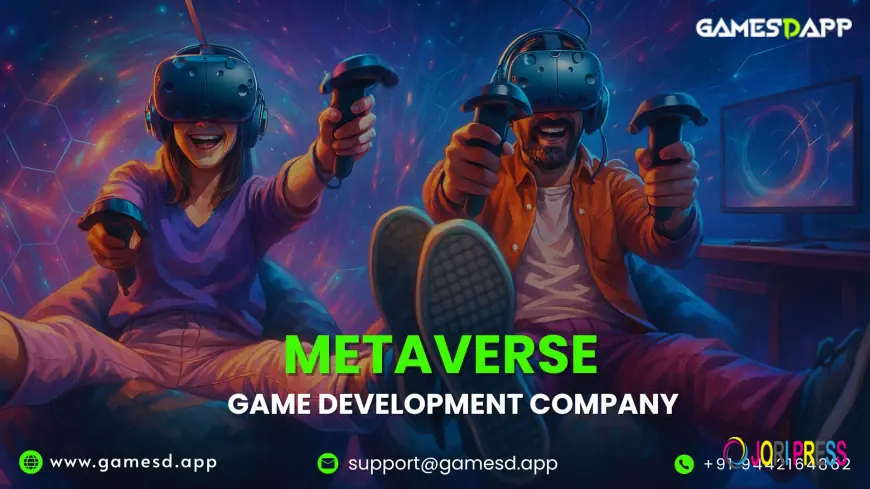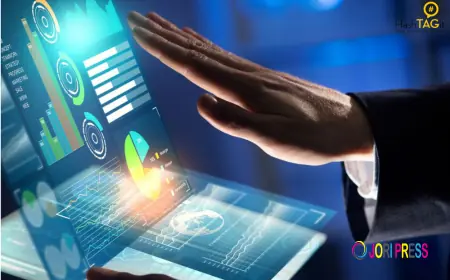How to Integrate Metaverse Into Your Existing Game: A Complete Guide
Metaverse Games Development Company Gamesdapp offers a unique 3D virtual gaming platform on any decentralized network. Get a free consultation from our experts.

The gaming industry is no longer limited to screens and controllers; it’s moving into immersive virtual worlds where players can own assets, build communities, and even earn real value. This shift is powered by the Metaverse, a digital universe that blends gaming, blockchain, social interaction, and extended reality into one flawless experience.
For developers and businesses with existing games, the question isn’t whether to adopt the Metaverse; it’s how. By integrating Metaverse elements, you can transform a traditional game into a dynamic ecosystem with NFTs, play-to-earn models, and virtual economies, offering players much more than entertainment.
This guide explores the key steps, benefits, and challenges of integrating the Metaverse into your existing game, and how experts like GamesDapp make it possible.
Why Integrate Metaverse into Existing Games?
The rise of the Metaverse is redefining how players interact with games. It’s no longer just about completing levels or unlocking achievements, it’s about being part of an immersive, living world. Integrating Metaverse features into an existing game brings several advantages:
Improved Engagement
Players become active participants in evolving virtual worlds rather than passive users.
New Revenue Streams
Through NFTs, in-game tokens, and play-to-earn models, developers can monetize beyond traditional game sales.
Global Communities
The Metaverse allows players from worldwide to connect, socialize, and collaborate.
Competitive Edge
As more studios embrace this shift, adding Metaverse elements helps your game stay relevant and future-ready.
Core Elements of Metaverse Integration
To successfully transform an existing game into a Metaverse-powered experience, developers need to integrate a set of core elements that improve both gameplay and user value:
Avatars & Digital Identity
Give players unique, customizable identities to represent themselves in the virtual world.
Virtual Economies
Introduce tokenized assets, NFT marketplaces, and in-game currencies for real-world value exchange.
Play-to-Earn Mechanics
Reward players with tokens, NFTs, or digital assets that can be traded or monetized.
Social Interaction Features
Enable chat, virtual events, and multiplayer collaboration to build active communities.
Immersive Tech (VR/AR)
Add extended reality features through VR Game Development and AR integration for deeper engagement and lifelike experiences.
Cross-Chain Interoperability
Ensure assets and identities work smoothly across different blockchains and platforms.
Steps to Integrate Metaverse Into Your Game
Integrating the Metaverse into an existing game requires a structured approach to ensure scalability, security, and player engagement. Working with an experienced Game Development Company makes this process more easy and future-ready. Here’s how metaverse game developers and businesses can make it happen:
Game Assessment
Evaluate your current game architecture and identify opportunities for Metaverse integration.
Blockchain Integration
Select a suitable blockchain to power NFTs, tokens, and asset ownership.
Smart Contracts
Implement smart contracts for secure in-game transactions, asset trading, and governance.
NFT Asset Development
Convert in-game items, characters, or skins into NFTs for true player ownership and tradability.
Community & Social Features
Add multiplayer chat, guilds, and event participation to strengthen engagement.
Immersive Technology
Integrate AR and VR elements to enrich gameplay with more interactive experiences.
Testing & Deployment
Conduct rigorous security and performance tests before launching to the player base.
Challenges and How to Overcome Them
While integrating the Metaverse into an existing game opens exciting opportunities, it also comes with its share of challenges:
Technical Complexity
Incorporating blockchain, NFTs, and immersive tech can be difficult without the right expertise.
Security Risks
Protecting in-game assets and transactions from hacks or breaches is crucial.
Scalability Issues
Ensuring smooth performance as user activity and assets grow requires strong infrastructure.
Monetization Balance
Adding play-to-earn models must not compromise the gaming experience.
Conclusion
The Metaverse is not just a trend; it’s the future of gaming, transforming traditional titles into interactive, immersive, and revenue-generating ecosystems. By integrating features like NFTs, play-to-earn models, and virtual economies, existing games can evolve into thriving digital worlds where players find value beyond entertainment.
With GamesDapp’s expertise as a Metaverse Game Development Company, businesses can seamlessly add these elements, ensuring scalability, security, and innovation. Now is the time to take your game beyond boundaries and step into the Metaverse.
What's Your Reaction?
 Like
0
Like
0
 Dislike
0
Dislike
0
 Love
0
Love
0
 Funny
0
Funny
0
 Angry
0
Angry
0
 Sad
0
Sad
0
 Wow
0
Wow
0
















































